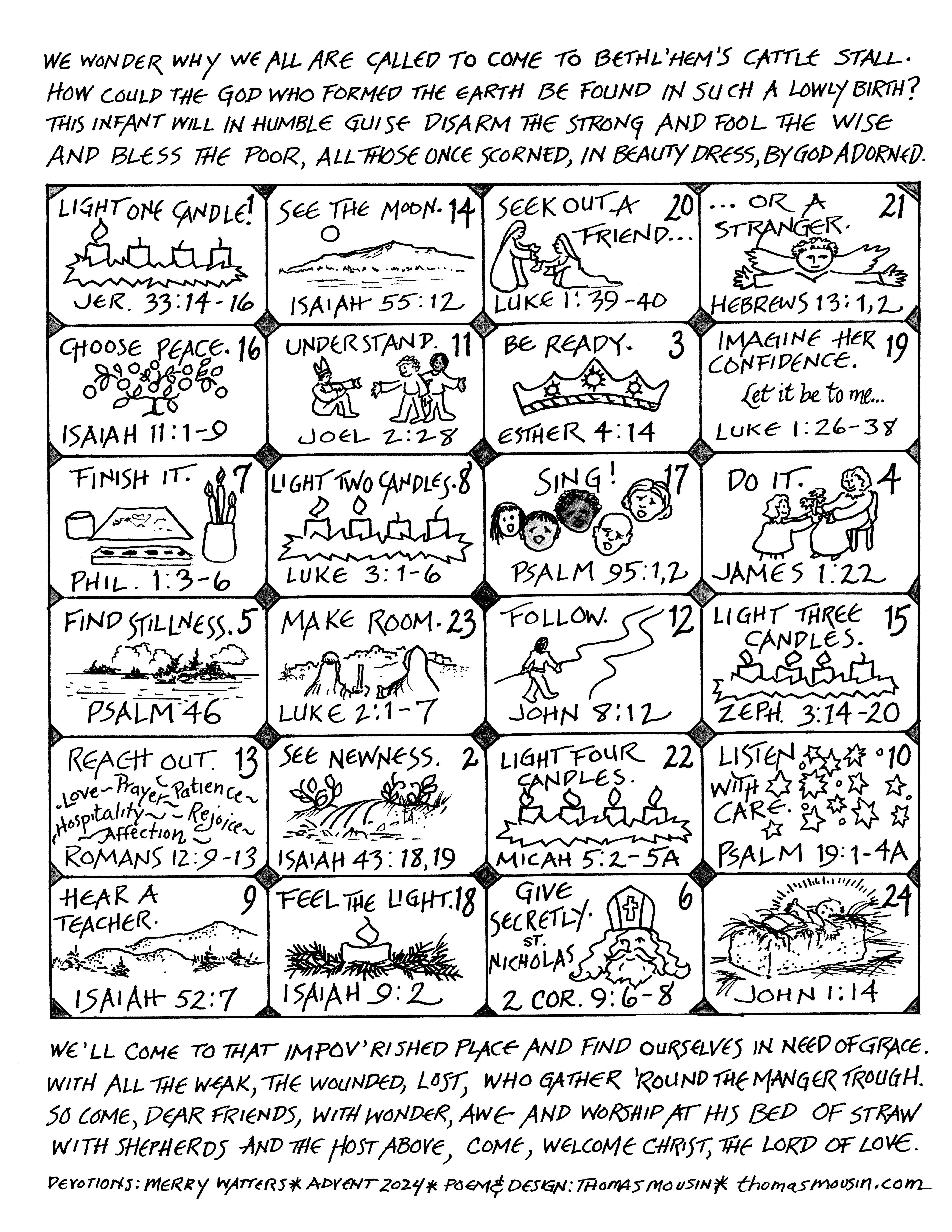New AI (artificial intelligence) software has been all over the news for the last few years, and in the last few months I’ve found it popping up everywhere. Suddenly Google has Gemini in my Gmail inbox, Microsoft has a Copilot prompt when I try to type in Word, and Apple tells me that Apple Intelligence will help summarize my texts, which really makes me ask—Isn’t a text message succinct enough?
Depending on whom you ask, we may be only a few years away from artificial general intelligence systems that can perform most human cognitive tasks, and will forever transform the way we work and live. Or the current AI tools that we have, based on “large language models” (LLMs), may be an environmental catastrophe based on plagiarism and theft. Or they may be mostly irrelevant to your daily life.
This week, I want to reflect on a “Lenten Lesson from LLMs.” In what ways are human beings and AI alike? How are we different? And what might that have to do with Lent?
A few weeks ago, a colleague in another part of the church shared with me an AI chatbot that had been designed specifically to answer questions about the church. It worked by searching publications by the Episcopal Church and Episcopal publishers like Forward Movement, and then by feeding all of that into ChatGPT with some additional guidance, and giving you a helpful response. He knew I worked on an app that made it easier for people to use our church’s various lectionary cycles, so he asked me for some additional data to help it give useful answers to questions like that.
I hadn’t used the tool before, so I opened it up. I asked a few questions about the church and our faith, and it seemed to give some useful replies. It tended to give a link to some official resource or church website, most of the time, which I thought was especially nice. And then I turned to the topic at hand: “Could you draft me a bulletin for the service of Morning Prayer today?”
Word by word, the bot began to reply. It provided a decent outline of the service, including the text of many of the prayers. It gave helpful references to pages of the BCP. And in the middle of the service, it told me there were usually three readings, and that they could be found in the Revised Common Lectionary entry for the day. “Hm,” I wrote back, “Shouldn’t I use the Daily Office Lectionary for Morning Prayer?” “Yes, I’m sorry. We are currently in Year Two of the Daily Office Lectionary, which can be found on page…” “… Wait a minute. Aren’t we in Year One?” (I briefly wondered whether I was wrong.) “Yes, I’m sorry,” it said again, “Because [here it inserts a correct explanation!], we are in Year One of the Daily Office Lectionary. The readings for today are…” And it names three random readings, which are not the readings for the day.
At this point, I start to wonder whether I’m crazy. “Are you sure? I don’t think those are the correct readings.” “I’m sorry,” it replies… and then lists three more readings, also completely wrong.
This was a scary experience. It wasn’t scary that the AI was wrong about how to find the readings for Morning Prayer; that’s a fairly complicated and not particularly important thing to need to do. What was scary is that the AI tool was confidently incompetent: it cheerfully and repeatedly hallucinated answers with no basis in reality, and reported them to me in the exact same tone and with the same level of confidence as its other, correct, answers about the church. It had no ability to reflect on or recognize its own limitations, and while it gave very polite apologies when I pointed out its mistakes, it plunged right back in to making them, nevertheless.
Lent should train you to be the opposite of this kind of AI.
Here are three things you might take away from Lent, that our AI friend would do well to learn:
- Learn your limits. On Ash Wednesday, we are reminded of our mortality, of the fragility of our bodies and the shortness of our time on earth. On Good Friday, we come face to face with the fact that we, like Peter and all the disciples, have often abandoned and betrayed our God. Throughout Lent, we test the limits of our willpower and endurance, again and again. Each one of us has things of which we simply are not capable, but it takes real reflection and self-examination to learn what those are.
- Admit when you need help. In Christian life, humility is the goal, not pretension; it is better to admit what you do not know or what you cannot do than to pretend to know what you do not know or to be able to do what you cannot do. There are times when “fake it ’til you make it” is good advice, but there are also times when “act like you have no idea what you’re doing and ask for help” is even better, because it’s true.
- Apologies without change are missing the point. In Hebrew, the word for repentance is teshuvah, which means “turning” or “returning.” To repent is not simply to apologize; it is to recognize that you’re following the wrong road, and turn back onto the right path. If you find yourself apologizing for the same thing to the same person again and again, that might be a sign that your wheels are stuck in a rut: you’re trying to turn back onto a better road, but there’s something keeping you in place, and something else in your circumstances needs to change before your wheels can stuck.
Our current AI tools are useful in many ways; just a few days before my unfortunate AI encounter, Michael had used the same tool to learn much more about the Nonjuring Schism and its relation to the Episcopal Church than his seminary professors had taught him or I could give him off the cuff. (And you could learn that, too!)
But what’s missing the most from these tools, right now, is what makes us the best human beings, what virtues we try to practice during Lent: reflection and self-examination, humility and the ability to ask for help, genuine repentance and the recognition that we need to change our ways. Few people would name these as the technical breakthroughs we need as the adoption of AI grows; but I sometimes wonder whether these ways of cultivating grace might be the most important technologies of all.


